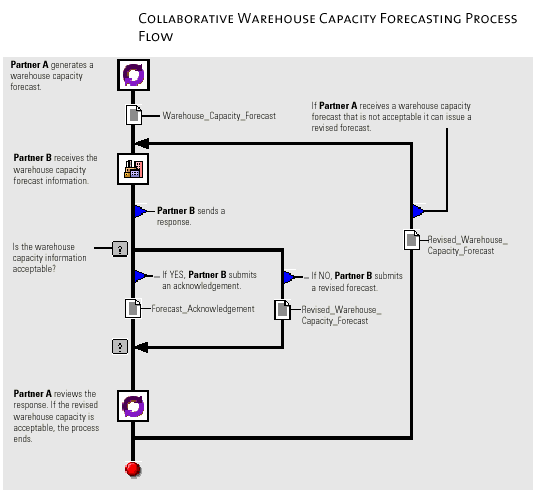|
Business Purpose
This process allows trading partners to iterate a warehouse forecast until it is acceptable to all parties. By modifying and exchanging projected warehouse utilization
information, partners can collaborate on ways to most effectively manage
existing or planned warehouse space while containing supply costs.
Forecast information describes the attributes of the warehouse itself in cubic
feet, number of slots, and pound capacity, as well as size and number of
incoming and outgoing shipments. Data exchanged also includes past and
current patterns of use in order to project the space utilization over a period
of time. The forecast enables partners to anticipate the amount of
warehousing space needed and the amount of activity that the current
warehouses can support.
Process Description
The partner with the greatest forecasting capability normally initiates the process.
-
The process initiator, Partner A, begins the process by generating the
Warehouse_Capacity_Forecast.
-
The receiving partner, Partner B, reviews the forecast and takes one of the
following actions.
-
If the forecast information is acceptable, Partner B issues a
Forecast_Acknowledgement.
-
If the forecast information is not sufficient or acceptable, Partner B issues a
Revised_Warehouse_Capacity_Forecast.
3. Depending on the response Partner A receives, one of the following
occurs:
-
If Partner A receives either a Forecast_Acknowledgement or an acceptable Revised_Warehouse_Capacity_Forecast, the process ends.
-
If Partner A receives an unacceptable or incomplete forecast, it issues a new Revised_Warehouse_Capacity_Forecast back to Partner
B.
4. The process continues to loop until both partners have reached
agreement. When Partner B receives the acknowledgement the
process ends.


|
|
